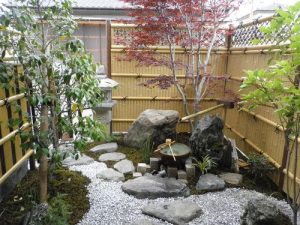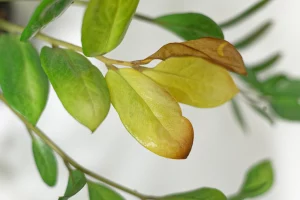Variation 1: Have you ever wondered how the serene and tranquil Japanese gardens are meticulously designed to create such a harmonious balance? Step into the enchanting world of Japanese gardening techniques, where every element is thoughtfully crafted to evoke a sense of peace and serenity. From perfectly pruned bonsai trees to carefully placed rocks, this ancient practice combines nature, artistry, and philosophy in a way that captivates all who enter. Get ready to immerse yourself in the beauty of these gardens as we uncover the secrets behind their creation.
Key Concepts And Philosophies In Japanese Gardening
- One of the key principles in Japanese gardening is the concept of wabi-sabi, which celebrates imperfection and the beauty that comes with age. This philosophy embraces the idea that nothing lasts forever, and thus, gardens should reflect this constant cycle of growth, decay, and renewal. In a Japanese garden, you will often find elements like moss-covered rocks or weathered wooden structures that evoke a sense of tranquility and harmony.
- Another important principle is shakkei or borrowed scenery. Unlike Western gardens where you may find tall walls or fences to create privacy, Japanese gardens aim to incorporate the surrounding landscape into their design. By seamlessly blending nature with man-made elements, such as strategically placed trees or openings in hedges, these gardens create a sense of depth and openness. Shakkei allows for an ever-changing background that enhances the overall aesthetics of the garden, making it feel connected to its surroundings.
In conclusion, principles like wabi-sabi and shakkei play vital roles in shaping Japanese gardening techniques. These philosophies guide gardeners to embrace imperfections as part of nature’s beauty while incorporating borrowed scenery to create a harmonious balance between man-made elements and natural landscapes. By understanding these concepts, one can gain a deeper appreciation for the artistry behind Japanese gardens and begin to incorporate their principles into their own outdoor spaces.

Essential Features And Components In Japanese Gardens
- One essential design element in Japanese gardens is the use of water features. Water symbolizes purification and tranquility in Japanese culture, making it a crucial component of these serene gardens. Ponds, streams, and waterfalls are some typical water features found in Japanese gardens. They not only provide a sense of calm and serenity but also serve practical purposes by creating opportunities for reflection or providing a habitat for fish and aquatic plants.
- Another important feature in Japanese gardens is the use of rocks and stones. Rocks are carefully selected and strategically placed to create visual interest as well as represent mountains or islands within the garden. The arrangement of rocks and stones follows the principle of asymmetry, reflecting the natural placement found in nature. These elements add depth and texture to the garden while representing stability, strength, and longevity.
A key component that differentiates Japanese gardens from other types is the integration of plants. In traditional Japanese gardens, plant selection is meticulous to ensure harmony with other elements like water features or rocks. Plants such as cherry blossoms, azaleas, maples, and mosses are commonly used due to their symbolism in Japanese culture. Cherry blossoms represent beauty while azaleas symbolize immortality—each plant plays a significant role in conveying specific meanings within the overall design concept.
Techniques:
- One traditional technique for creating a Japanese garden is known as the borrowed scenery or shakkei. This method involves incorporating the surrounding natural landscape, such as mountains or trees, into the design to create a sense of harmony with nature. By strategically placing elements in the garden to frame and highlight these borrowed sceneries, designers can create an illusion of extended space and tranquility. This technique not only makes use of existing features but also creates a connection between the garden and its surroundings.
- Another traditional method for creating Japanese gardens is using rocks and gravel to represent water. Known as karesansui or dry landscape gardens, these designs mimic natural landscapes with carefully arranged rocks representing mountains and raked gravel symbolizing water bodies such as rivers or lakes. By using different sizes and shapes of rocks combined with precise lines raked into the gravel, these gardens create a peaceful atmosphere of serenity and simplicity. The lack of actual water in these designs allows visitors to contemplate its presence through their imagination, encouraging introspection and mindfulness.
These traditional methods for creating Japanese gardens are rooted in centuries-old principles focusing on capturing nature’s essence rather than trying to replicate it exactly. By incorporating borrowed scenery or using rocks and gravel creatively, designers evoke feelings of calmness, balance, and harmony within these outdoor spaces. These techniques allow visitors to experience a sense of peace while immersing themselves in the beauty of Japan’s natural landscapes within man-made spaces

Modern Adaptations:
In recent years, there has been a surge of interest in modern adaptations and contemporary approaches to Japanese gardening. These new practices draw inspiration from traditional techniques but also incorporate contemporary elements, resulting in unique and innovative garden designs.
- One popular approach is the use of minimalist design principles, focusing on simplicity and clean lines. This style emphasizes open spaces, carefully chosen focal points, and the integration of natural materials such as stone and wood.
- Another contemporary approach to Japanese gardening is the incorporation of sustainable practices. With growing environmental concerns, many gardeners are choosing to create eco-friendly landscapes that conserve resources and promote biodiversity. This can include using native plants that require less water and maintenance or implementing rainwater collection systems for irrigation purposes. Additionally, some designers are exploring the concept of wabi-sabi, which celebrates imperfections and the beauty of aging materials in a garden’s design.
These modern adaptations bring a freshness to Japanese gardening while still honoring its ancient origins. By blending traditional techniques with contemporary styles, these gardens become living works of art that reflect both past traditions and current aesthetics. Whether it’s through minimalist design principles or sustainable practices, these modern approaches invite us to rethink our relationship with nature and find harmony within our outdoor spaces.
Conclusion:
In conclusion, Japanese gardens hold a timeless beauty and tranquility that can transport us to a place of serenity and peace. These meticulously designed landscapes are not just about aesthetics, but also about creating an atmosphere conducive to meditation and introspection.
One aspect that contributes to the timelessness of Japanese gardens is the use of natural materials. From the perfectly placed rocks to the carefully pruned trees, every element in these gardens is intentionally chosen to mimic nature’s harmony. This attention to detail creates an environment that can transcend time, allowing visitors to feel connected with the beauty of nature throughout the ages.
Furthermore, Japanese gardens also offer a sense of tranquility that is unmatched by any other type of garden design. The careful placement and arrangement of various elements create a visually pleasing composition that evokes feelings of peace and calmness. Whether it be through the raked gravel in a Zen garden or the flowing water in a pond garden, these elements draw our attention inward and invite us to contemplate our own existence within the vastness of nature.
In essence, Japanese gardens are not merely spaces for leisure or entertainment; they are spiritual sanctuaries where we can escape from the chaos of everyday life and find solace in nature’s embrace. Through their timeless beauty and tranquil ambiance, these gardens remind us of our connection with nature and help us find inner peace. So next time you visit a Japanese garden, take a moment to appreciate its elegance and allow yourself to be transported into an oasis of serenity amid life’s constant






Be First to Comment